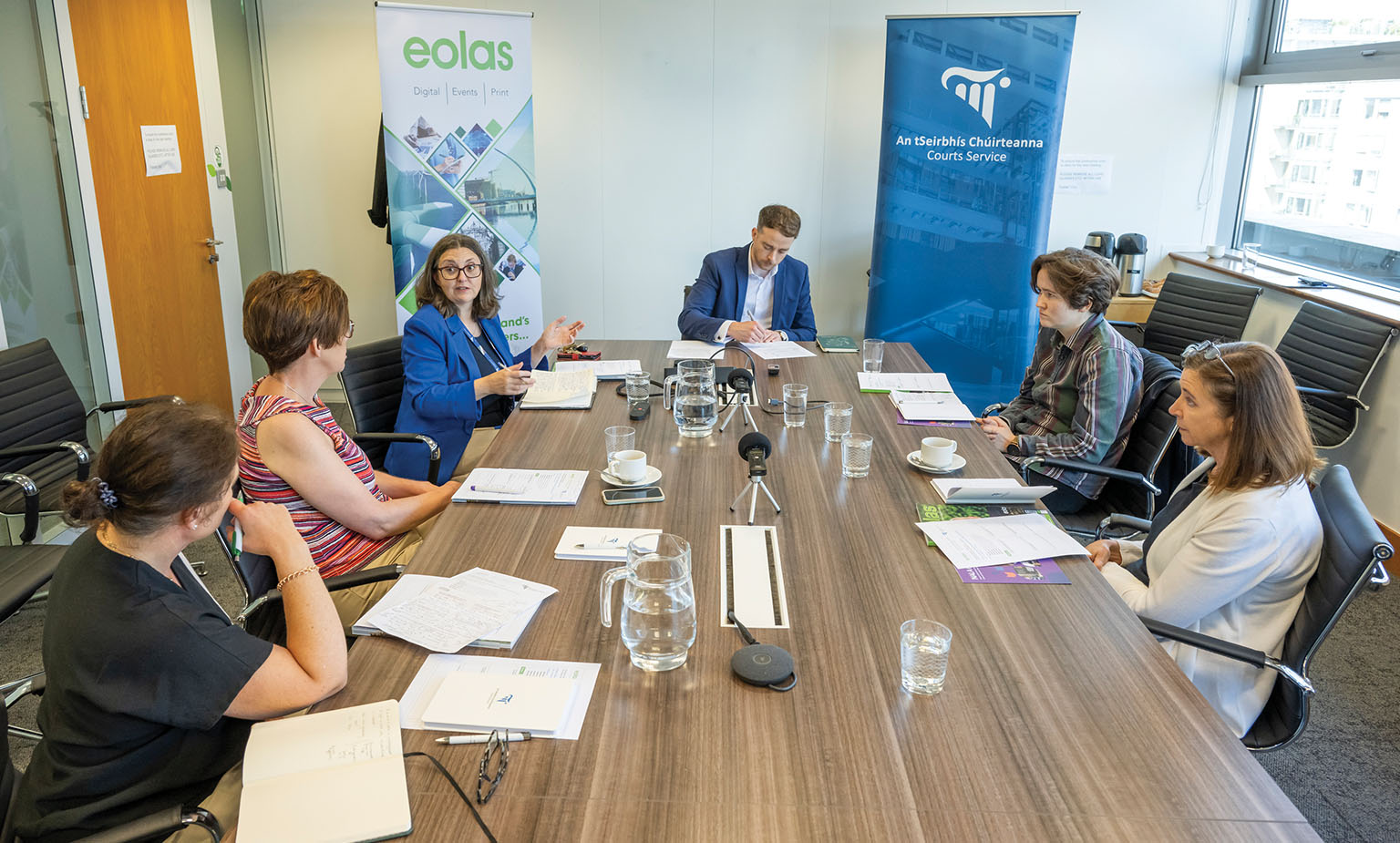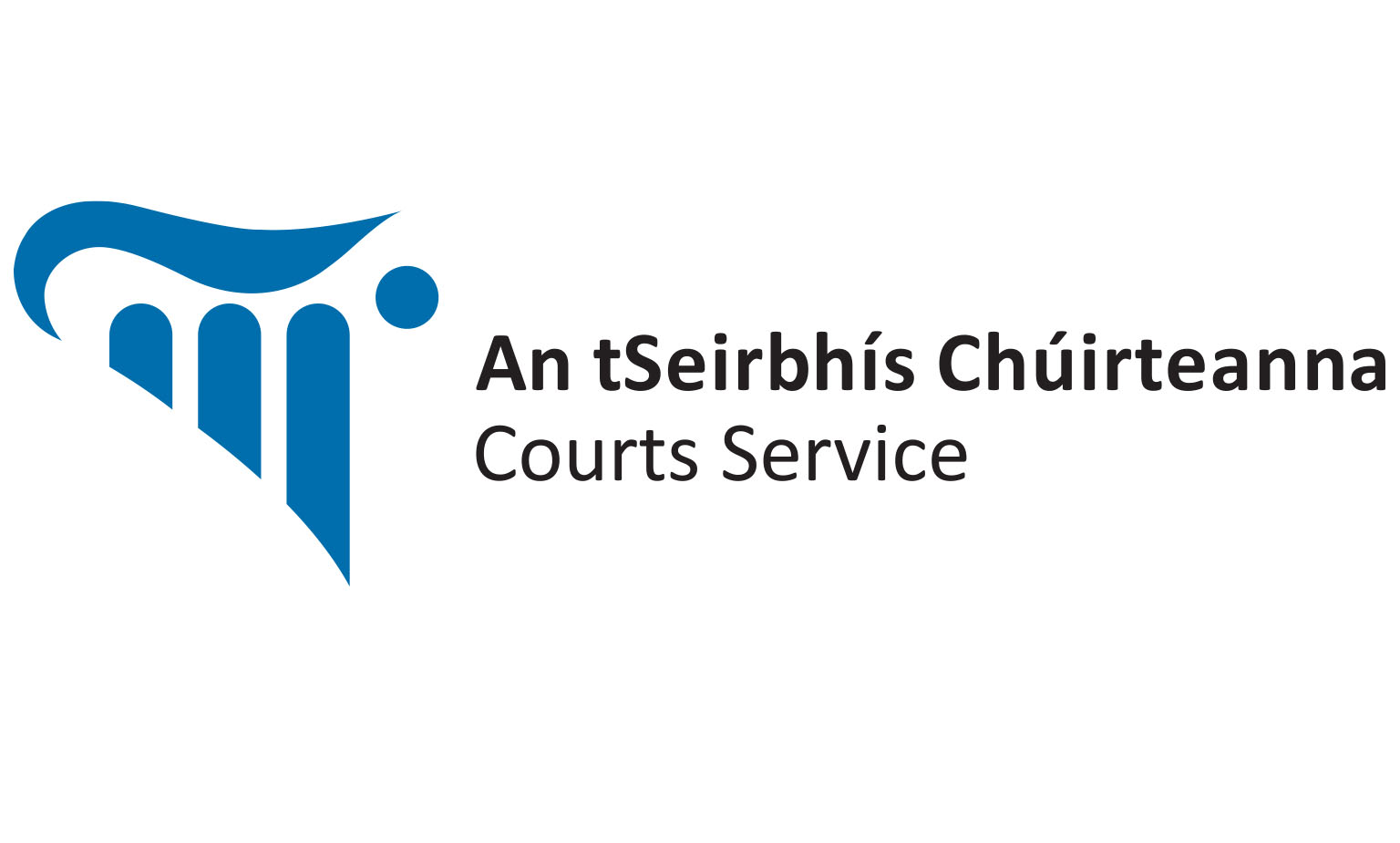Inclusive digital transformation of the Courts Service
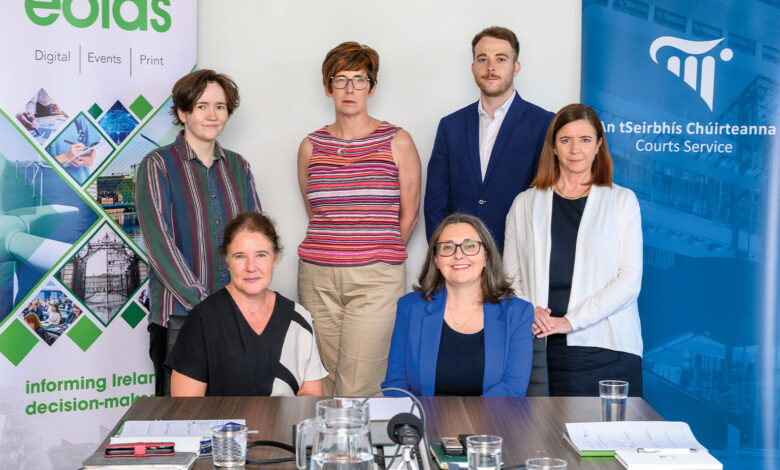
An tSeirbhís Chúirteanna – the Courts Service hosted a round table discussion in its Phoenix House headquarters, Dublin, inviting civic society stakeholders from across the courts system to discuss inclusive digital transformation and lessons for the wider public service.
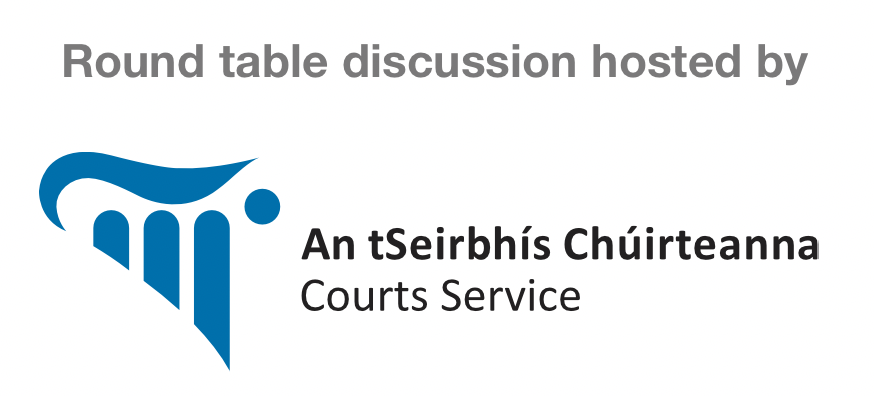
In an era of increasing digitalisation, how has your organisation developed its range of services?
Angela Denning
Four or five years ago, the Courts Service had 140 different IT systems which made any attempt to simplify or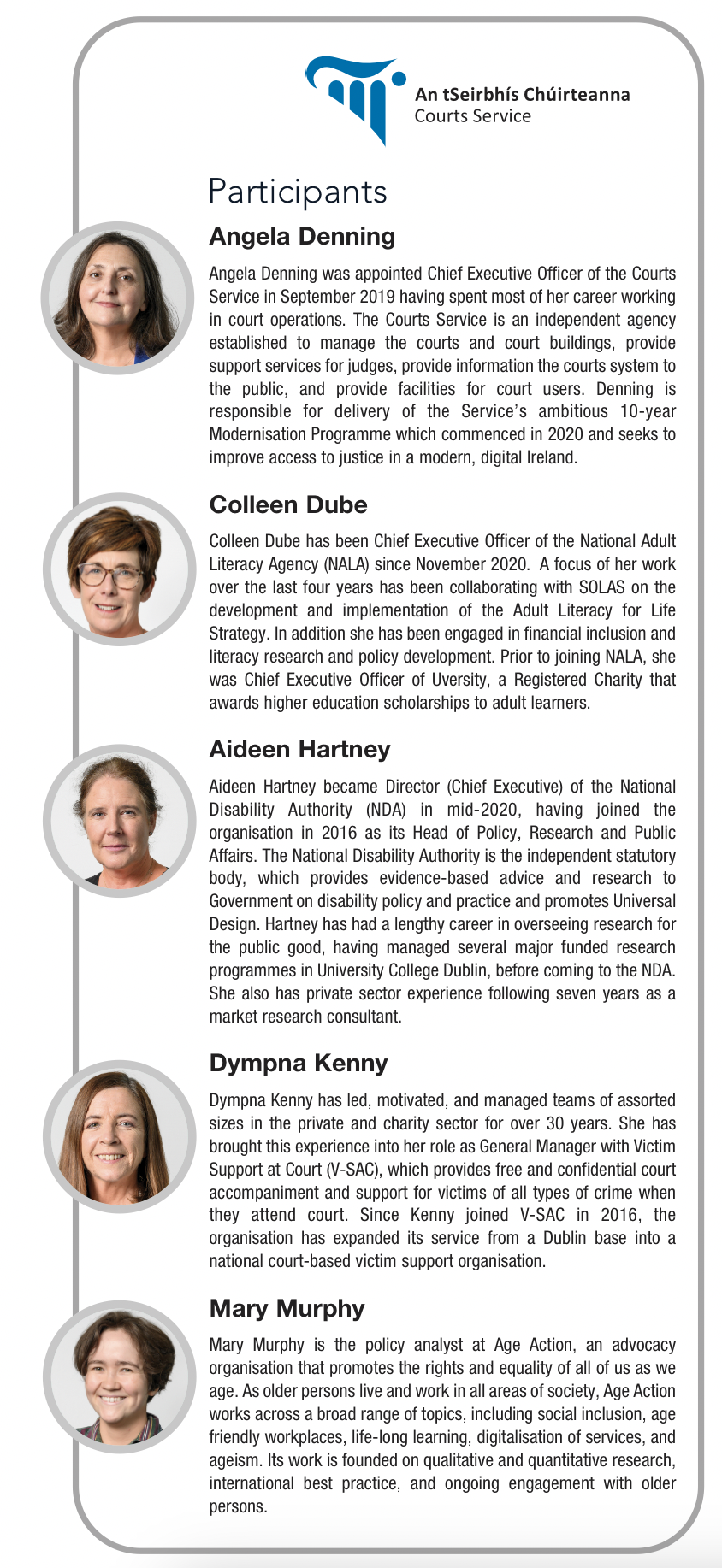 streamline our services very difficult. Many of these systems were obsolete. Our focus is to establish a single unified case management system with three interfaces: the staff view, the public user view, and the judicial view. The first application was rolled out to staff to support the administration associated with the Assisted Decision-Making (Capacity) Act 2015. In 2023, we moved High Court civil work onto the new system, replacing a 30-year-old case management system. A phased rollout of the system to support family law work in Circuit Court offices is underway and we are making good progress with the eProbate project. However, we do not envisage a ‘digital only’ system. As the Courts Service digitises, that should take pressure off frontline staff in public offices allowing more time to support those with limited digital literacy. We also continue to invest significant effort in using plain English information on our website and in the design of new court forms. In a vote of confidence, the Citizens Information website has a link to the family law website – which, in June 2024, won a Civil Service Excellence and Innovation Award for citizen impact and customer service. The ambition is to replicate this success across every type of law and jurisdiction.
streamline our services very difficult. Many of these systems were obsolete. Our focus is to establish a single unified case management system with three interfaces: the staff view, the public user view, and the judicial view. The first application was rolled out to staff to support the administration associated with the Assisted Decision-Making (Capacity) Act 2015. In 2023, we moved High Court civil work onto the new system, replacing a 30-year-old case management system. A phased rollout of the system to support family law work in Circuit Court offices is underway and we are making good progress with the eProbate project. However, we do not envisage a ‘digital only’ system. As the Courts Service digitises, that should take pressure off frontline staff in public offices allowing more time to support those with limited digital literacy. We also continue to invest significant effort in using plain English information on our website and in the design of new court forms. In a vote of confidence, the Citizens Information website has a link to the family law website – which, in June 2024, won a Civil Service Excellence and Innovation Award for citizen impact and customer service. The ambition is to replicate this success across every type of law and jurisdiction.
Colleen Dube
NALA is a registered charity and membership-based organisation that supports and advocates for individuals with unmet literacy needs. Since 2008, NALA has been offering distance and eLearning services. Coincidentally, in the month when public health restrictions for Covid came into effect in Ireland, we launched Learn with NALA, a new eLearning system. It was a ‘lifeline’ for people and organisations – such as education and training boards – which had to immediately pivot online. Our user profile changed substantially. Alongside people with unmet literacy needs, we supported many older people to develop their digital literacy skills, as well as special schools and disability services which availed of our services. In recent years, a considerable proportion of our work has been devoted to developing Learn with NALA, incorporating universal design, involving users to improve the platform, and trying to stay ahead of the curve in terms of accessibility. Overall, I spend a considerable amount of time engaging with government and public service providers to emphasise that we must adopt a ‘digital and’ approach to public services rather than ‘digital only’.
Aideen Hartney
During the Covid pandemic, the migration of many public services from in-person to remote delivery was incredibly significant for disabled people. For many, this development increased their access to services. A second catalyst has been the UN Convention on the Rights of Persons with Disabilities (UN CRPD) which Ireland ratified in 2018. Since then, there has been a steadily increasing focus on realising the rights of disabled people. In this context, public services cannot be ‘digital only’. However, if we adopt a universal design approach, the digital approach will also serve the maximum number of users. Typically, state agencies have focused on the middle of the bell curve in an attempt to achieve maximum return for minimum investment. However, when we design for extreme users – at either end of the curve – we can increase accessibility to as many people as possible. While ‘digital first’ is an important concept, it must be applied in tandem with ‘inclusion first’.
Dympna Kenny
Victim Support at Court is a volunteer-led, in-person service provided within the courts. 80 per cent of our victims’ referrals are from An Garda Síochána. We have significant work to do in relation to digital and providing information in an accessible way prior to a victim’s arrival in court. Currently, we are finalising our three-year strategy which will include a comprehensive review of our digital footprint. Given that we do not have a significant budget, we must determine how we can maximise our digital offering to provide support to victims attending court.
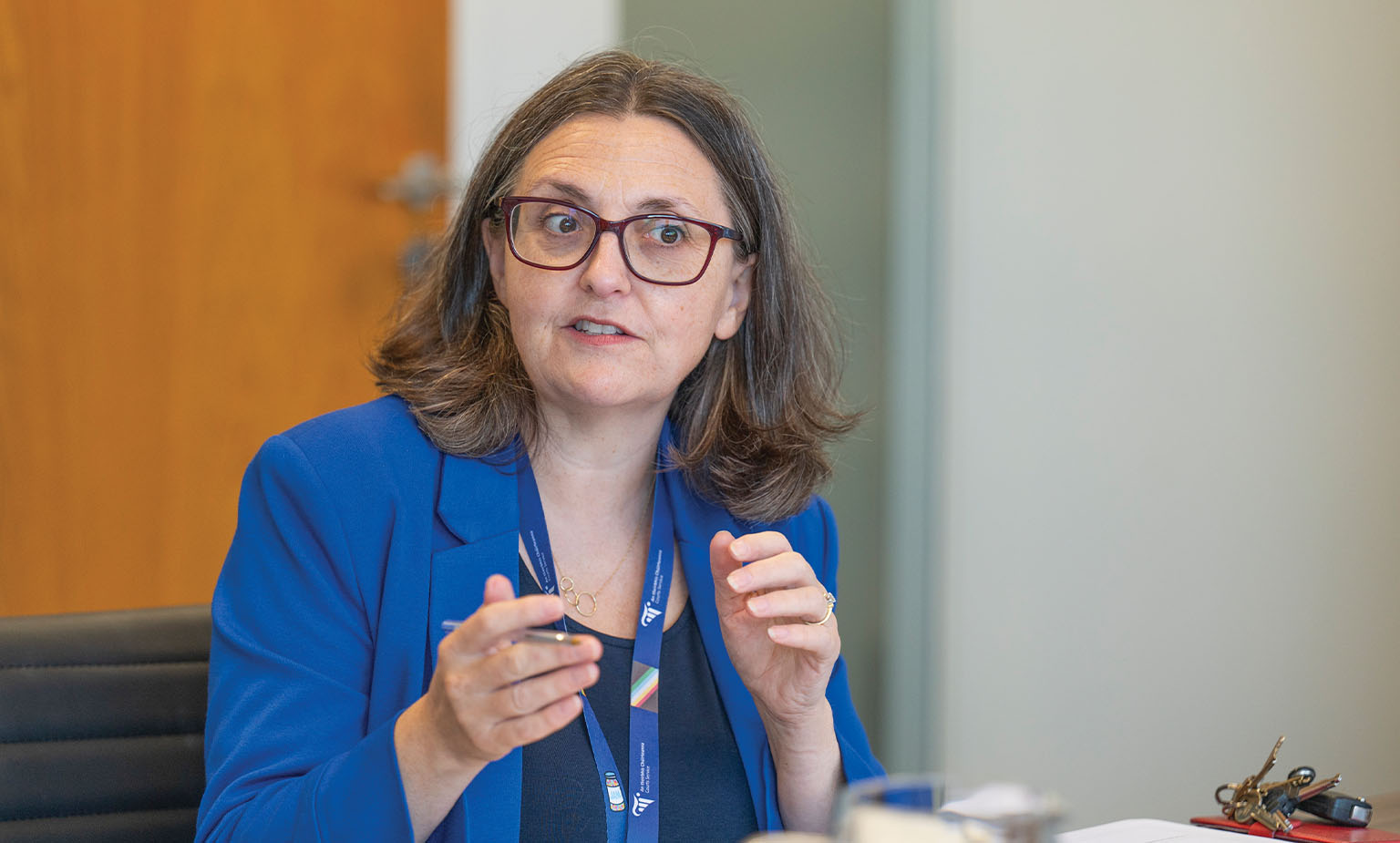
“As the Courts Service digitises, that should take pressure off frontline staff in public offices allowing more time to support those with limited digital literacy.” Angela Denning
Mary Murphy
Getting Started is one of Age Action Ireland’s two main services and is focused on developing the digital skills of older persons. Learner-led, it is about determining what a person’s needs and priorities are. Getting Started acknowledges that there are many reasons for people having gaps in their digital skills and the varied nature of these gaps. Roughly one-third of people aged 65 exited formal education at primary level and another third at secondary level. Consequently, there are significant literacy challenges among older cohorts. At the same time, cognitive decline can make interaction with complex systems more difficult. However, we also acknowledge that digitalisation and digital literacy are not fixed points. Since Covid, we have revised our mode of teaching – and our ethos – reorientating towards basic functional skills to facilitate problem solving. This can more be difficult and more involved, but it unlocks greater value in the longer term. Ultimately, not everyone is going to avail of digital services – whether through digital literacy gaps or the absence of resources to afford the devices. As such, digital skills are not the sole solution to digital exclusion.
How have your stakeholders’ expectations of the Courts Service evolved?
Aideen Hartney
European legislation means we have new legal obligations. As per the EU Web Accessibility Directive, all public service websites and apps are supposed to be fully accessible. In this context, we must ensure that all digital developments delivered by the Courts Service are accessible for disabled users. The National Disability Authority has the statutory monitoring duty for the Directive. Having assessed progress over the last few years, there is a considerable road to travel for most state-affiliated entities. It is encouraging to hear that the Courts Service is working on an IT strategy and that accessibility is a priority. Simultaneously, the EU Accessibility Act, which was recently transposed into Irish legislation, aims to ensure that products and services on offer in the State are accessible and will come into effect from June 2025.
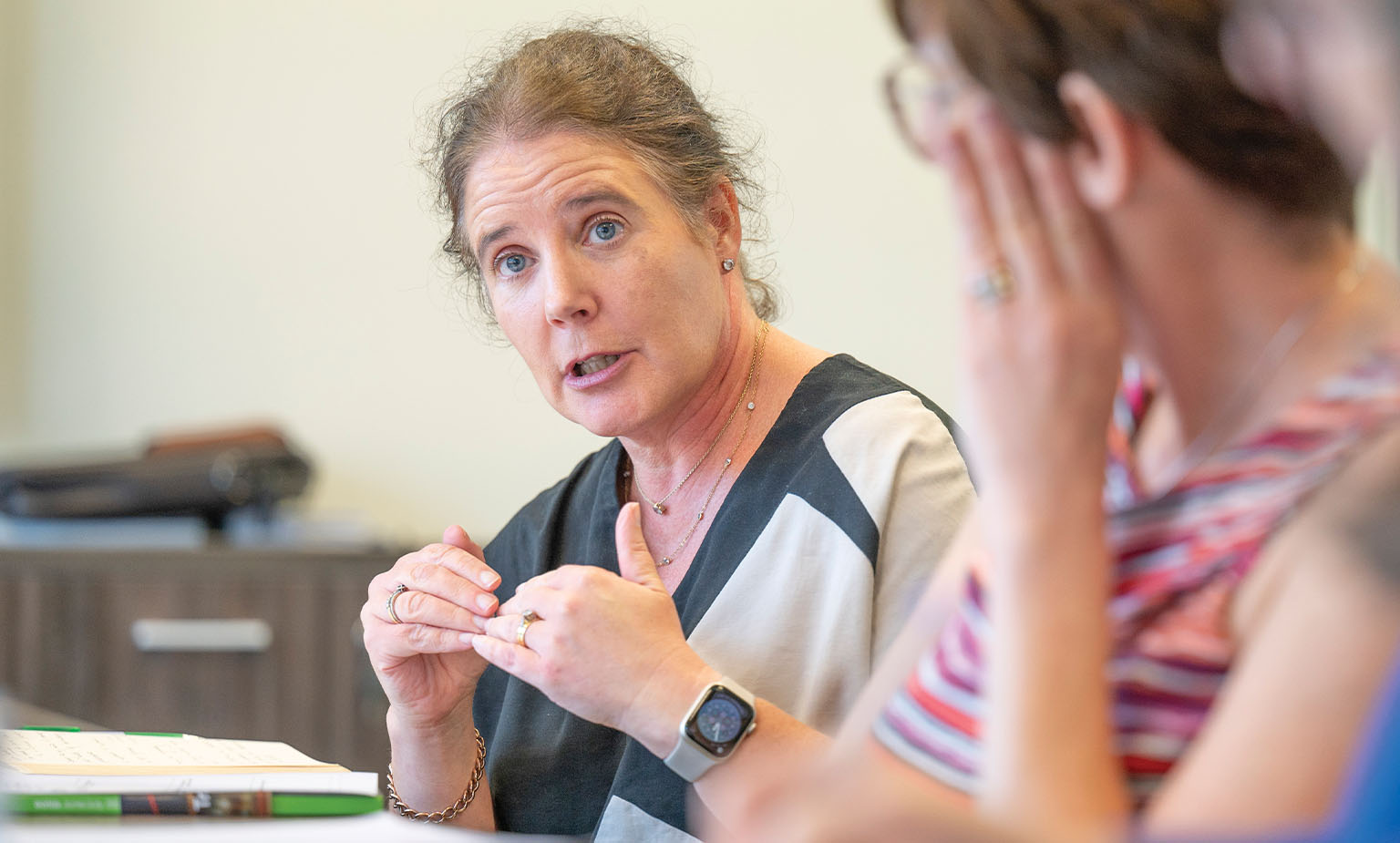
“When we design for extreme users – at either end of the curve – we can increase accessibility to as many people as possible…” Aideen Hartney
Angela Denning
The Courts Service website is undergoing an overhaul, and progress is being made, particularly with elements such as new easy to understand content on family law, civil debt and Probate. We have been using external partners to test sites to ensure that everything is accessible, but it is a real challenge. Legal terminology has a particular meaning because we are a common law jurisdiction, and it can be difficult to always use plain English. In terms of expectations, the civil service delivered for people during Covid-19, and I think the success of the Pandemic Unemployment Payment (PUP), for example, increased expectations exponentially. The difference was that due to the emergency nature of Covid-19, much of the usual scrutiny was circumvented amid the need for agility. We were able to get remote courts up and running in a very short space of time. They are not perfect. We must make changes and make them easier to access. We are also very conscious that whatever we roll out must be accessible via any type of mobile device, including with poor connectivity. We cannot exclude people for having a device which is 10 years old, or where they live geographically. That is the challenge; it is about meeting the expectations to improve accessibility for all of our people.
Colleen Dube
Stakeholders’ expectations can be described as ones of urgency, immediacy, efficiency and accessibility. Other essential considerations are security and confidentiality that influence the public’s support and trust. Some people do not want to engage online for understandable reasons, such as cyber threat, but also because of a lack of confidence in their skills and connectivity.
Mary Murphy
‘Expectations’ is the key word in this conversation because people’s expectations of public services are high. But when I engage with older persons from a digitalisation perspective, there is also an expectation that there will always be an office they can walk into, a phone number they can call, and a human available they can talk to. However, many older people feel a sense of betrayal and are under the impression that a social contract is being broken by the acceleration of digital only services. Another factor is the specificity of people’s situations and the individual complexity of cases. For example, if a person finds themselves in a complex situation relating to tax, they want to speak with a person at Revenue rather than just relying on FAQs on a website. This expectation applies equally to the Courts Service. Things like family law are exceptionally complicated and even the best-designed website cannot account for every single scenario in which someone may find themselves. These challenges can only be addressed where public servants are available and equipped with the necessary expertise to guide people through a particular situation. As such, we must ensure that the human element of public service is never lost.
Dympna Kenny
From our perspective, in supporting victims, it is about practicality. What victims need when they go to court is very pragmatic. Having information on the Courts Service website about each court and how to get there is hugely helpful. Consider, for instance, a victim who has never been to court before. Often, Victim Support at Court meets victims for a pre-trial visit. However, victims do not always get referred to us. Therefore, it is vitally important to ensure that the necessary information, including a point of contact, is in place for each court. Having a platform in the court building itself to signpost the victim to support services could be useful as victims often return to court multiple times throughout a trial.
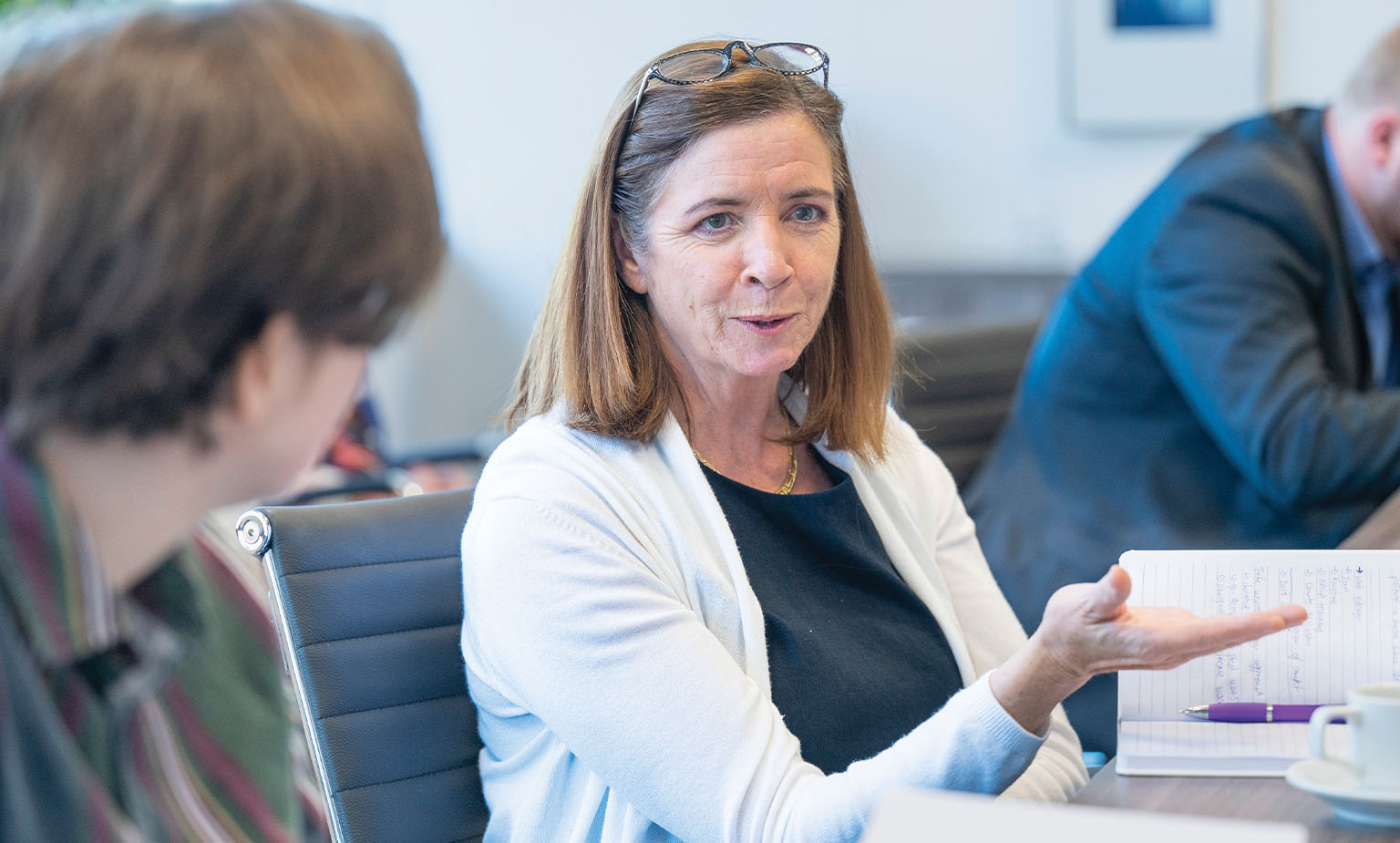
“From a digital perspective, collaborating and having discussions like this one are extremely important…”
Dympna Kenny
What is the significance of collaboration among stakeholders of the Courts Service in overcoming the challenges of digitalisation?
Dympna Kenny
From a courts system perspective, it is really important to engage with all the stakeholders to make sure that its digital ambitions work for people. Not all the solutions to the challenges we face today are digital. From a digital perspective, collaborating and having discussions like this one are extremely important, and getting the right people around the table means that everyone is engaged and represented as we drive forward change.
Mary Murphy
What we all need to remember is that inclusive digitalisation is not a niche or siloed challenge. It is a challenge which extends throughout the justice sector, the public service, and wider society. It is important for me, as someone who advocates for older persons, to make that point because we need to underline the urgency of this challenge. It affects so many different people and we need to avoid stereotypes. Collaboration, therefore, is about understanding the dynamic and nuanced nature of the change taking place.
Angela Denning
Within the Courts Service, we engage with people from all walks of life, regardless of age, ability, race, religion, and so on. We must always remember that and be equipped to provide for everyone. As such, the value of this kind of collaboration is fundamental to how we adapt. As we recruit new talent, we have a predominant focus on customer service. This is why we now seek applicants who have a career history in customer service roles. Having people with the skills – including high emotional intelligence – to interact with vulnerable people is important because it changes the entire dynamic of how we deliver our services for the better.
Colleen Dube
There is an opportunity for the Courts Service to collaborate with many organisations, including people who have experience of the process and are willing to volunteer. What we need to determine is whether the broader public service is aware of the work that the Courts Service is undertaking. Informed by a robust evidence base, the Courts Service is a model which can be learned from and replicated. The value will emanate from how we capture this evidence, profile it, learn from it, and apply it. People need to see evidence which demonstrates how a change has worked. We know that this has happened already in the Courts Service. Now we must capture this change and share it.
Aideen Hartney
Collaboration is a hugely important aspect of effecting change, be that with end-users or with other stakeholders. With the UN Convention on the Rights of Persons with Disabilities, this is now a process which stakeholders expect; they expect to be consulted and involved through the design process of a service, a policy, or a product. To date there has been a tendency across public services to consider disability in a siloed context, but one-in-five Irish people have a disability and ensuring that disabled people are included cannot be achieved without collaboration. Observing and sharing examples of good practice is a hugely important and motivating component of this.
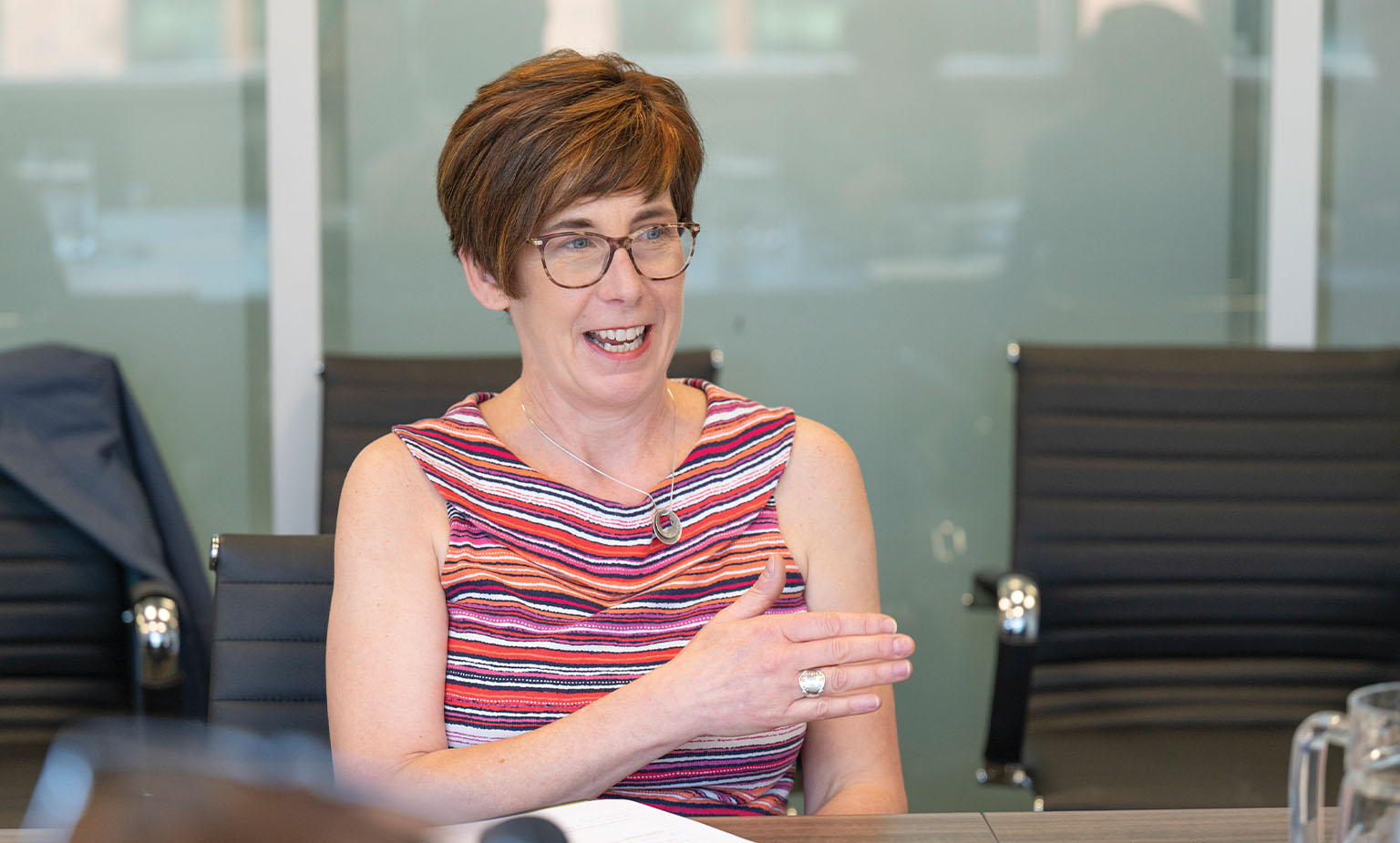
“Informed by a robust evidence base, the Courts Service is a model which can be learned from and replicated.”
Colleen Dube
How can public trust be retained and developed as the Courts Service implements more digital solutions?
Colleen Dube
Transparency and participation unlock trust. We have talked about making services inclusive and secure, but there is also an element of making people aware of the work that is being undertaken so that they can realise that the Courts Service is committed to public service. I know the Courts Service is exhibiting the levels of integrity, empathy, and transparency which are critical in maintaining public trust. However, in my experience, ambition must be managed. Expectations on the public service are colossal and they cannot all be met all of the time. Given the finite resources and the wide variety of stakeholders, it is necessary to determine the priority initiatives that will make a difference, concentrate on them, and bring people on the journey. This builds trust and attracts more people to join the journey.
Dympna Kenny
Sharing successes is equally important. There are many challenges from the Courts Service’s perspective, but it must also demonstrate that public voices are being heard and expectations are being met. Angela mentioned the Courts Service Modernisation Programme. Obviously, the stakeholders in this room are aware of that programme, but it is equally important that the public understands that the Courts Service is working towards enhanced access to justice and better responding to the needs of court users.
Mary Murphy
Aideen has talked about expectations around coproduction and public involvement. That process has the effect of cultivating trust through a sense of ownership among the public; that public services are of them, for them, and designed with them in mind. It can be easy to focus on people who are not as especially marginalised or disadvantaged, but trust can become much trickier when considering people who have been over criminalised and have experienced the adversarial side to the courts system. The idea of developing trust with those cohorts of people requires a more comprehensive transformation.
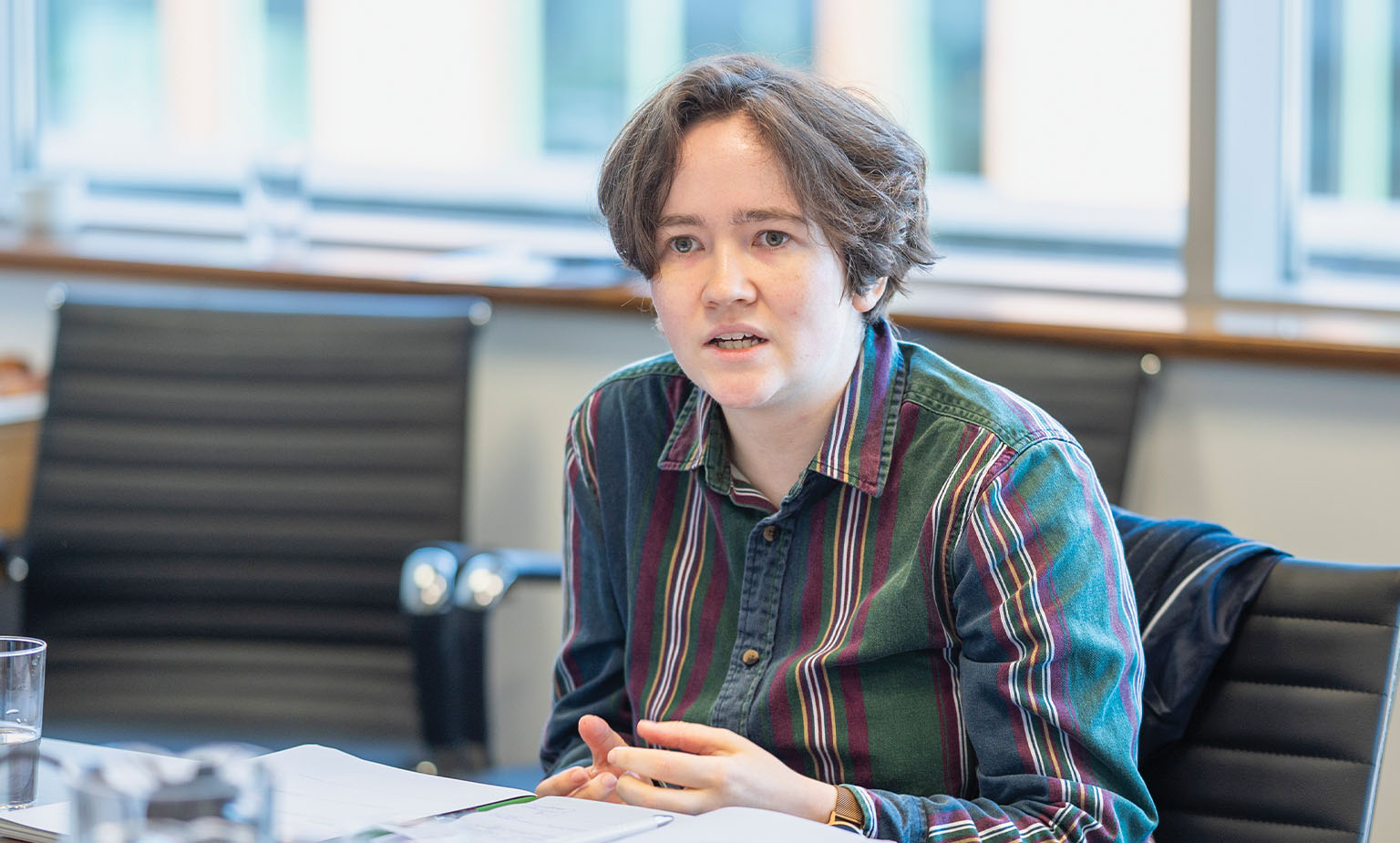
“‘Expectations’ is the key word in this conversation because people’s expectations of public services are high.”
Mary Murphy
Angela Denning
Established in 2022, the Courts Service Inclusion Group has been undertaking work with marginalised communities – such as refugee communities. Here in Smithfield, Dublin, we are surrounded by DEIS schools, yet many local people do not know about the civil service career opportunities available to them within the Courts Service. One of our statutory obligations is to provide information about the courts system. To achieve this, we must reach more marginalised groups, this in turn builds trust.
Aideen Hartney
There are two strands to building trust. Transparency and tone from the top-down is a significant first step, and there is a consensus in this room about how this leadership should trickle down the organisation. Secondly, there are mechanisms which support transparency and tone, such as procurement. If public service bodies can procure goods and services with inclusion in mind from the outset, it makes building public trust much easier. Inclusion should be one of the criterion upon which public service bodies, such as the Courts Service evaluates its tenders.
